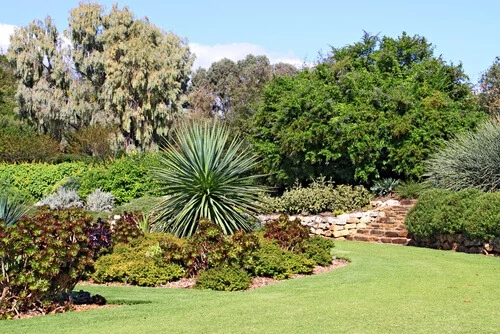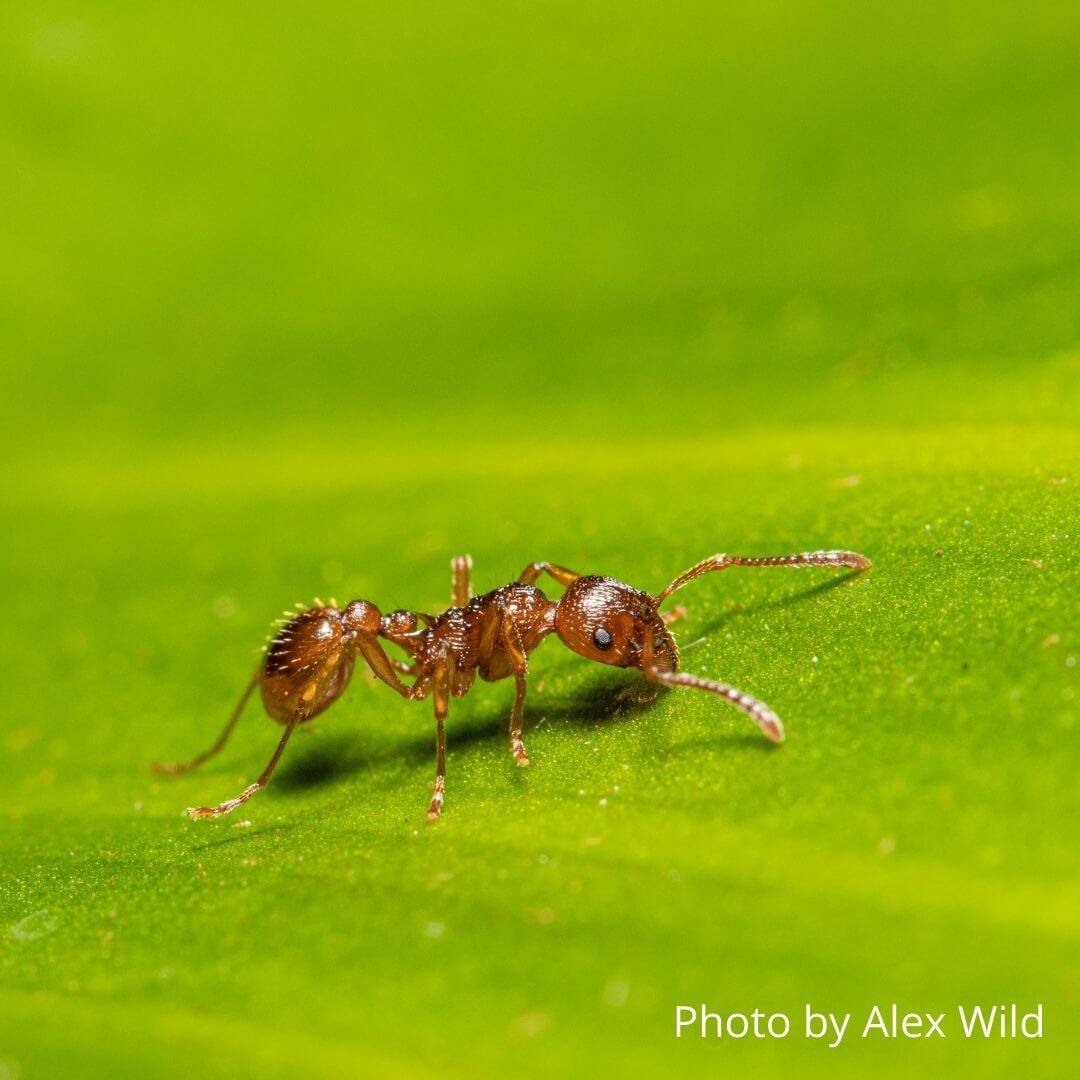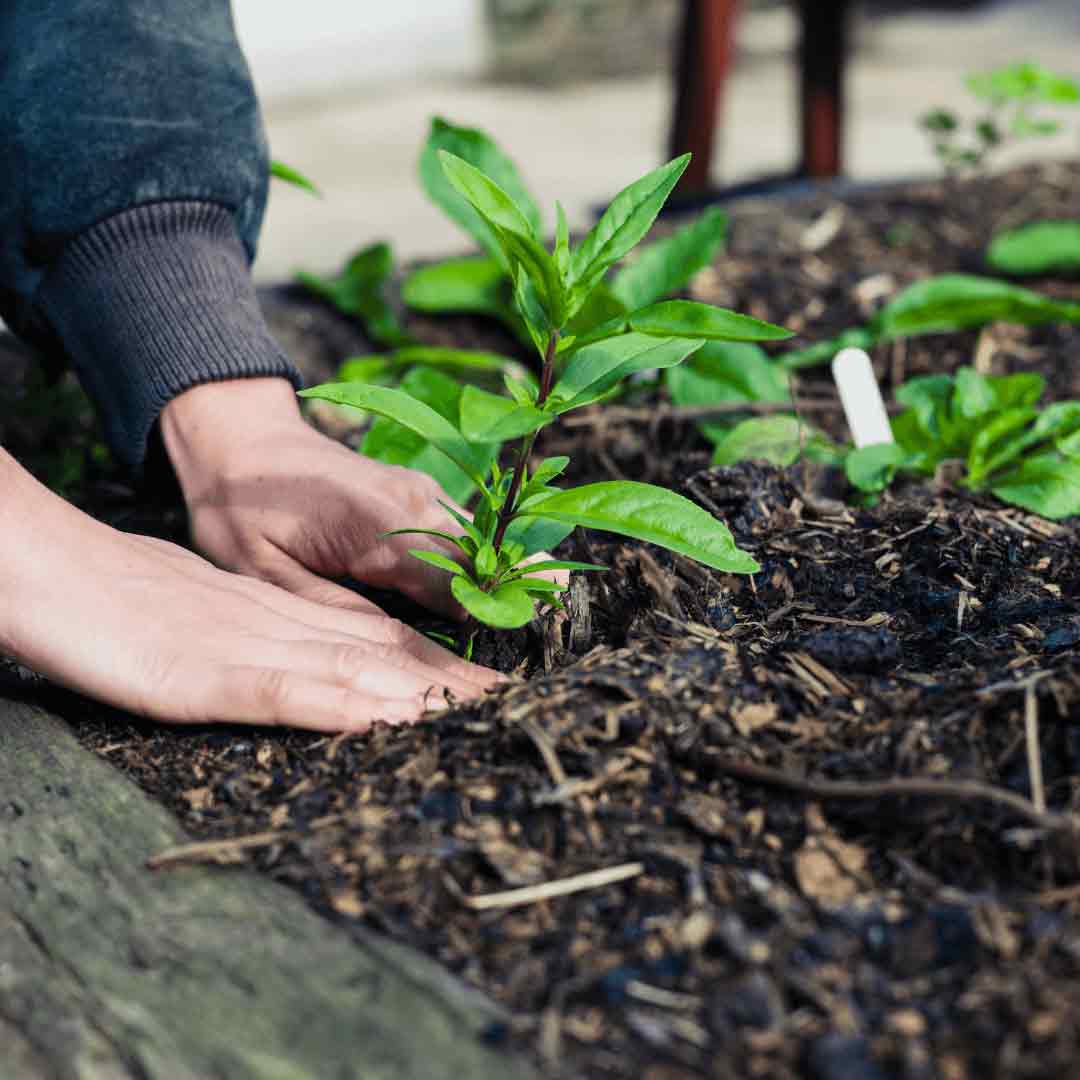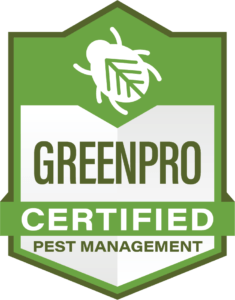
Eco-Friendly Pest Control
Pesticides are often found in local creeks and rivers at levels that cause environmental harm. This can occur even when pesticides are used legally, according to the label.
Unnecessary use of pesticide products results in unnecessary risk for you, your family, and the environment. Eco-friendly pest control uses an established strategy called Integrated Pest Management (IPM). This uses knowledge of pest biology and behavior combined with less-toxic and non-toxic methods to reduce or eliminate reliance on pesticides to manage pests.
Chemicals in your yard can kill both good and bad bugs. Consider using a GreenPro Certified Professional who will know what methods work best for your home’s garden or landscape. A GreenPro certification is the highest accreditation program available for the pest management industry. Find a local GreenPro certified professional in your area with the search bar below!
It may sound complicated, but it is based on a few core principles:
- Base control measures on pest biology
- Eliminate conditions that support pest populations
- Use control measures at the appropriate time according to pest population and life cycle
- Promote healthy soil and choose pest resistant plants
- Support beneficial organisms that keep pests in check naturally
Simple Steps for Eco-Friendly Pest Control
Benefits of eco-friendly pest control include:
- More effective, longer lasting pest control
- Reduced risks to humans and pets
- Improved water quality
- Protection of wildlife
- Higher populations of beneficial insects
- Better soil health
Good Housekeeping
- Eliminate clutter which provides shelter for pests.
- Clean up food crumbs and don’t leave pet food out.
- Seal food in pest proof containers.
- Fix plumbing leaks.
Keep pests out
- Seal your home against unwanted bug and rodent invaders.
- Ensure that your doors have good seals at the bottom and edges.
- Caulk or seal cracks and around utility penetrations of walls and floors.
- Ensure that windows have intact screens.
- Trim branches and foliage away from house.

Less is More!
Chemicals in your yard kill both good and bad bugs. Use less-toxic or non-toxic alternative methods of pest and weed control to keep your garden-friendly bugs on your side and unwanted bugs under control. Reliable sources of pest-specific information include the University of California IPM Program and Our Water Our World. Our Water Our World materials are also available at many nurseries and home centers.
Attraction Is Essential
Attract and keep beneficial bugs in your yard and let them do the work for you. Plant flowers and shrubs that attract the bugs you want in your garden. You will notice a reduced need to use chemicals to control “bad bugs” when you have lots of these good bugs around. Unwanted bugs will always be in your garden—a healthy garden will still thrive even with them there. Learn more about beneficial insects. Plants like rosemary, yarrow, and coyote brush are some great options for your yard. Learn more about plants that attract.
Right Plant, Right Place
Putting the right plant in the right place is essential for a plant to be healthy and pest resistant. Select pest and disease resistant plants, and varieties that are suited to the particular planting site, considering factors like sunlight, soil, and surrounding plants’ water needs. Consider plants that are native to your area.
Cockroaches
All around Sacramento County there have been increasing reports of cockroach activity, and the culprit is likely the invasive species Blatta lateralis, or the Turkestan cockroach. This handout helps identify the species of cockroach you are dealing with, provides facts, tips and how to manage them.
Check out some of the City of Sacramento’s available resources like the cockroach management tips page! And visit, UC Integrated Pest Management’s website for more on Turkestan Cockroaches.

- Ants
- Spiders
- Snails & Slugs
Tips for Common Pests
Argentine Ants
In Sacramento, if you’ve got a swarm of ants in your home, it’s most likely Argentine Ants (Linepithema humile). Being such a common problem, Argentine ants are also linked to one of the most significant pollution problems in urban creeks. It turns out that efforts to control Argentine ants with pesticide sprays have resulted in toxic amounts of pesticides in urban creeks all over California. Until a few years ago, the pesticides diazinon and chlorpyrifos were used extensively to control ants around homes, and were found at toxic levels in urban creeks almost every time water quality agencies looked for them. Now that these pesticides have been phased out, we are finding their replacements, pyrethroids, fipronil, and imidacloprid, at toxic levels in many urban creeks.
Argentine Ants Continued
The proper use of less or non-toxic pest control can prevent or eliminate these pests. Consider these steps below:
- Soap and water is the best method for immediate relief from the swarm in your kitchen. A spray of ordinary dish soap mixed with water kills ants on contact, and helps with cleanup.
- Don’t use bug spray! Aerosol insecticide sprays don’t work any better than soap and water for killing ants in your kitchen, so they pose an unnecessary risk to you and your family. Sprays around the perimeter of your home are overkill, and result in water quality problems.
- Clean up food sources that are attractive to ants. Ant scouts are very effective at finding food scraps and leading a column of workers to them.
- Seal cracks. Exclude ants from your home by finding and sealing the cracks and holes where the trails are coming in. They will look for alternate routes, so this may take some patience and persistence.
- Trim back branches that contact your house. They provide a highway for ants looking for a way in.
- Keep ants away from pet food. Buy or devise a water or Tanglefoot barrier to keep them away from pet food.
- Containerized baits. Some people choose to use insecticidal baits that are designed for ants, and they can be very effective while using a small fraction of the amount of pesticides that a spray would contain. Baits with boric acid work well and are a least-toxic choice. Properly formulated baits work on a delayed action so that the workers carry the pesticide back to the nest and spread it among the colony before they die. Baits must be placed in out-of-the-way places. Properly placed, pre-containerized baits will also reduce the chance of people coming in contact with the pesticide, or the pesticide being washed away down the storm drain.
These methods do take some time and effort to be effective, but the end result is longer term control with less pesticide use.

For more details on effective ant control, go to these online resources:
- Ants fact sheet from Our Water Our World
- Go to the UCIPM Ant Page for extensive Pest Notes, Quick Tips, and an online video for home ant control.
- Argentine ants By Dave Tamayo, Sacramento County Stormwater Quality Program
Additional non-toxic pest control methods include:
- Reduce habitat and food sources outside your home.
- Keep mulch away from the house. Mulches can be great for plant and soil health, but some are also a favorite nesting site for Argentine ants, so avoid having mulching right next to the house.
- Reduce aphid populations. Argentine ants “farm” aphids and other insects (scales, mealybugs) that produce honeydew. They actually move aphids around and protect them from natural enemies, in exchange for sugar-rich honeydew. To reduce populations of honeydew producers:
- Support and attract populations of aphid enemies by planting insectary plants, and avoid any application of broad spectrum insecticides. Insecticide applications in the garden often induce outbreaks of pests like aphids and spider mites.
- Exclude ants from trees and shrubs with Tanglefoot (super-sticky gooey stuff available at some nurseries). This can reduce access to honeydew producers like aphids, which will help limit the size of the colonies in your yard.
- Avoid quick release fertilizers that stimulate an overabundance of succulent growth that aphids love.
- Argentine ants need fairly moist conditions, so in Sacramento, low water use plants in your landscape will help reduce the amount of suitable habitat available to them.
Spiders
Spiders are generally considered to be beneficial because they eat large amounts of insects.
Bites from black widows are painful and serious. The most important thing for reducing the chance of being bitten is to avoid or remove their habitat (such as debris piles). See the Our Water Our World spider fact sheet for more information.
Other types of spider bites in Sacramento can sometimes cause a significant adverse reaction in humans, but generally spiders in the our area are not a much of a threat, and are primarily a nuisance through excessive webbing on houses or when they wander indoors.

For more details on effective spider control, go to these online resources:
- Spider fact sheet from Our Water Our World
- The UCIPM Spiders page has detailed Pest Notes, and easy to use Quick Tips.
Snails and Slugs
- Don’t use highly toxic snail baits that contain metaldehyde, which pose an unnecessary threat to children, pets, wildlife, and water quality.
- Iron phosphate baits are an effective least-toxic alternative.
- Reduce snail habitat and moisture.
- Exclude snails from planting beds (this is really only practical for raised beds where copper strips can be readily mounted).
- Trap or handpick snails, and smash them underfoot. To avoid flies that will feed on dead snails, make sure you either bury the dead snails, or bag them up and put them in the trash.

For more details on effective snail and slug control, go to these online resources:
- Snails and Slugs fact sheet from Our Water Our World
- The UCIPM Snails and Slugs Page has detailed Pest Notes, and easy to use Quick Tips.
- Follow us on Facebook for other tips!
Resources
Do It Yourselfers:
- Our Water Our World (OWOW) — Provides pest management tips, and a list of local stores that carry less toxic products.
- UC Integrated Pest Management Program — Provides pest solutions for home and garden, including tutorial videos and fact sheets.
- Master Gardeners Expert — advice from UC Extension Master Gardeners
- Demonstration Gardens
- River-Friendly Landscaping Workshops
Professional Landscapers:
Rescape Qualified Professionals- Find Rescape Qualified Professionals that are educated in sustainable landscaping practices, including water conservation, weed control and pest management.
Pest Control Services (IPM Certified):
For pests associated with your home or other buildings: We recommend that you obtain certified IPM services from businesses participating in IPM Certification programs, IPM certified professionals rely on detailed knowledge of pest biology to reduce pesticide use while effectively preventing and managing pests in and around your home and business.
Videos:
- SSQP Video Library
- Gardening Webinars by Our Water Our World
- UC IPM
- Sacramento County Master Gardeners

How to Properly Dispose of Pesticides
Remember, pesticides, even less toxic ones, are toxic chemicals and should always be disposed of safely.
- Drop off any unused pesticides at a Household Hazardous Waste drop-off location instead
- Pesticides can also be dropped off at a Recovery Station’s Special Waste drop-off area free of charge
- Never pour unused pesticides outdoors or down storm drains
- Never pour pesticides down indoor drains such as sinks, toilets and showers
Below are some links for hazardous waste drop-off locations in Sacramento County:



